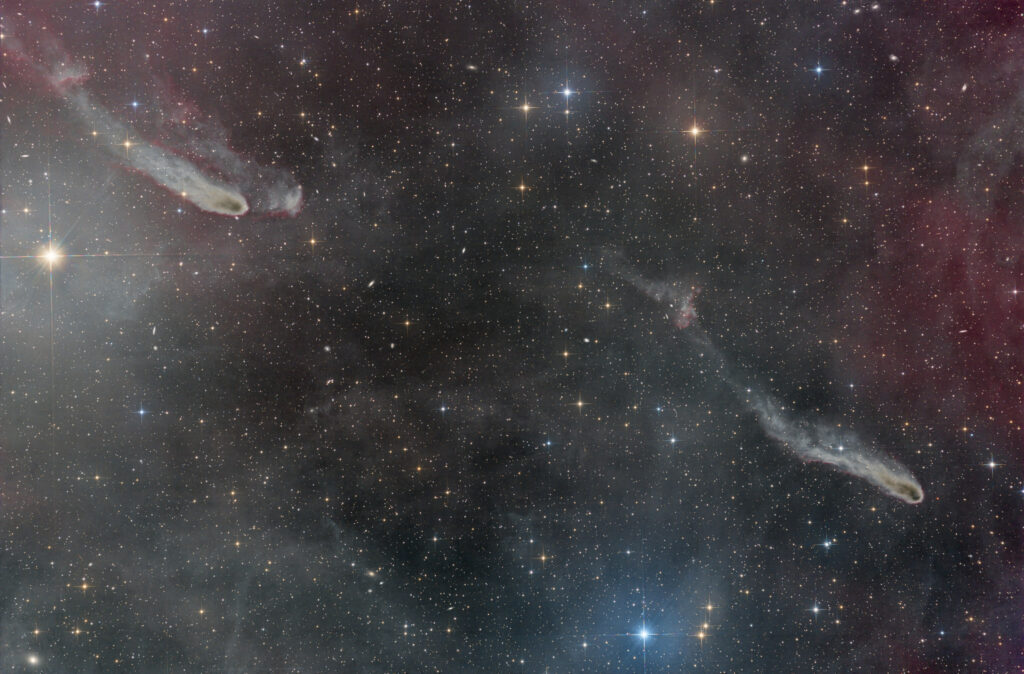
Another CG image, completed just after Christmas Day, showing CG 15 (lower right) in Puppis and CG 16 (upper left) in Carina. Two more for the growing catalog of CGs here.
More details at Astrobin coming soon.
Continue reading
Another CG image, completed just after Christmas Day, showing CG 15 (lower right) in Puppis and CG 16 (upper left) in Carina. Two more for the growing catalog of CGs here.
More details at Astrobin coming soon.
Continue reading
CG season is also rain season in Namibia, so it took a while to gather enough data for image, adding to the growing catalog of CGs here.
More details at Astrobin coming soon.
Continue reading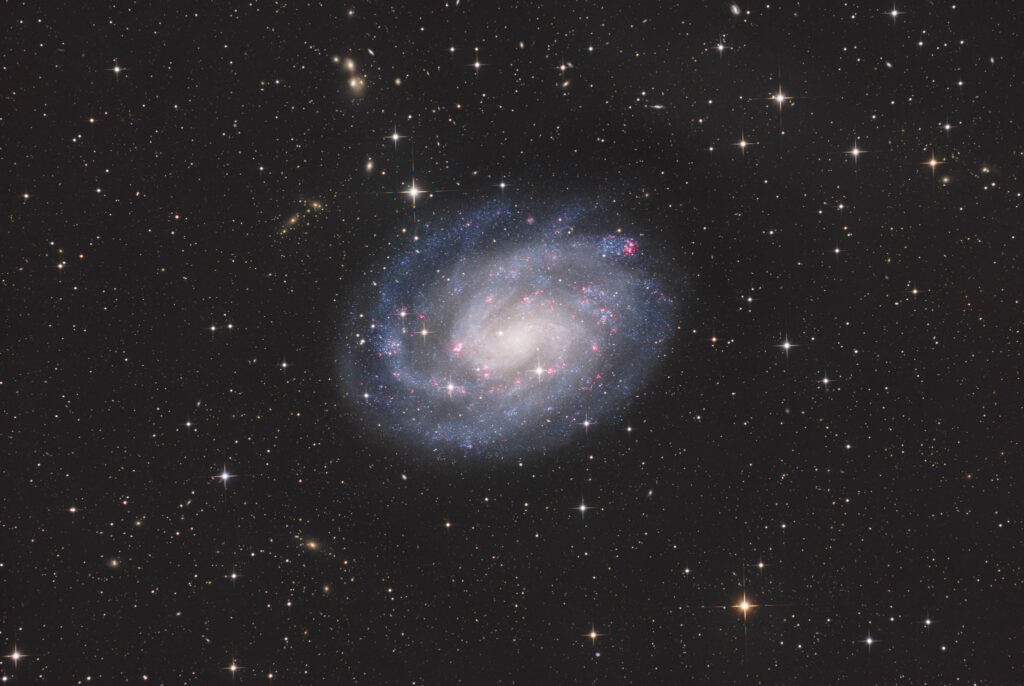
Difficult processing with these data: separating stars and galaxy with StarXTerminator doesn’t work well here, too many artefacts. So all the stretching was done with the starfull images, with just a bit of star reduction on L, to preserve the many little, mostly blue stars in the arms of NGC 300.
More details at Astrobin.
Continue reading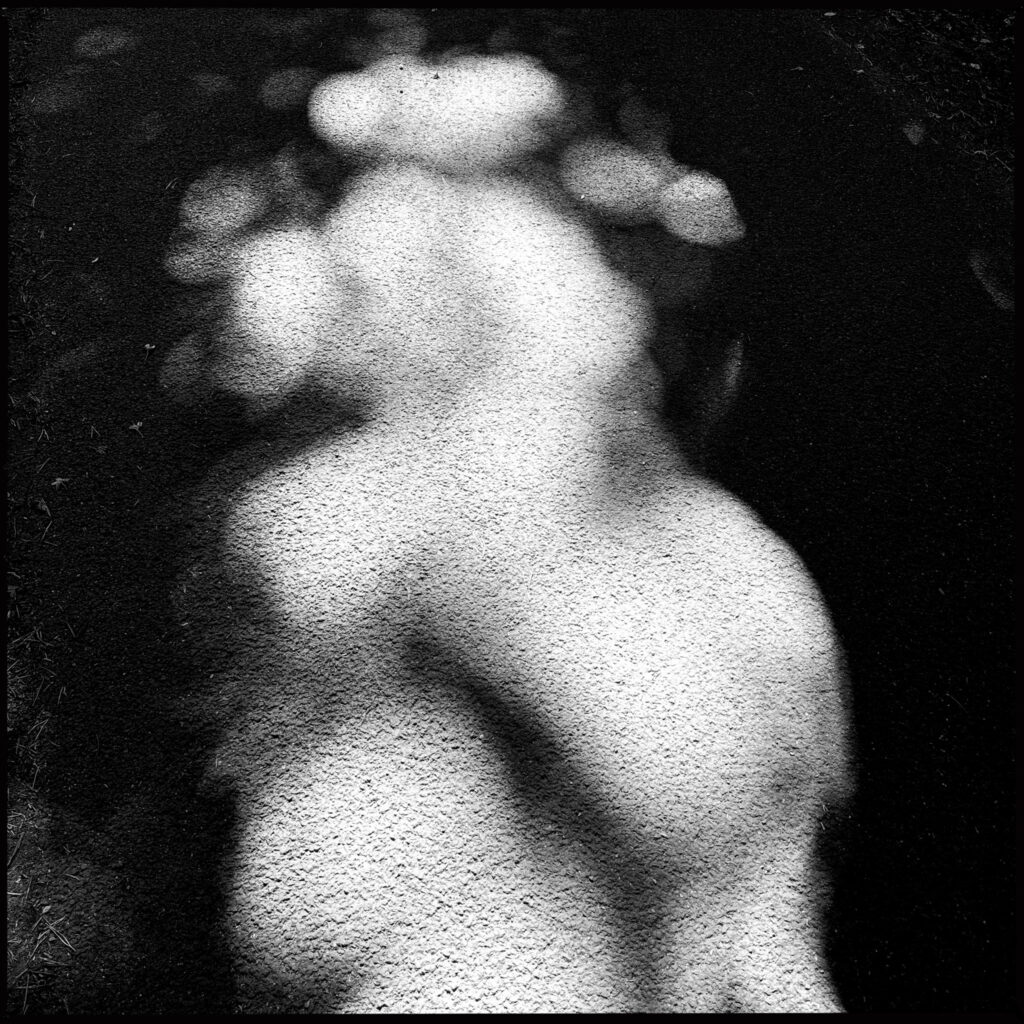
It took a while, but now round three of the Squares made it to my website. The images from 2022 to 2024 were already published as a photobook.
Es hat ein Weilchen gedauert, jetzt ist die dritte Runde der Squares auch hier auf der Website zu finden. Als Fotobuch sind die Fotografien von 2022 bis 2024 schon etwas länger verfügbar.
Complete series / komplette Serie: Photograpy > Projects > Squares 3
Continue reading
SW-Bilder einer Kurzreise nach Genf mit Besuch des CERN Anfang Oktober 2016.
Continue reading
Some impressions from a few days of late summer in Budapest, Hungary, September 2016. Not yet published on my website here.
See Photography > Travel > Budapest 2016 for the complete series.
Continue reading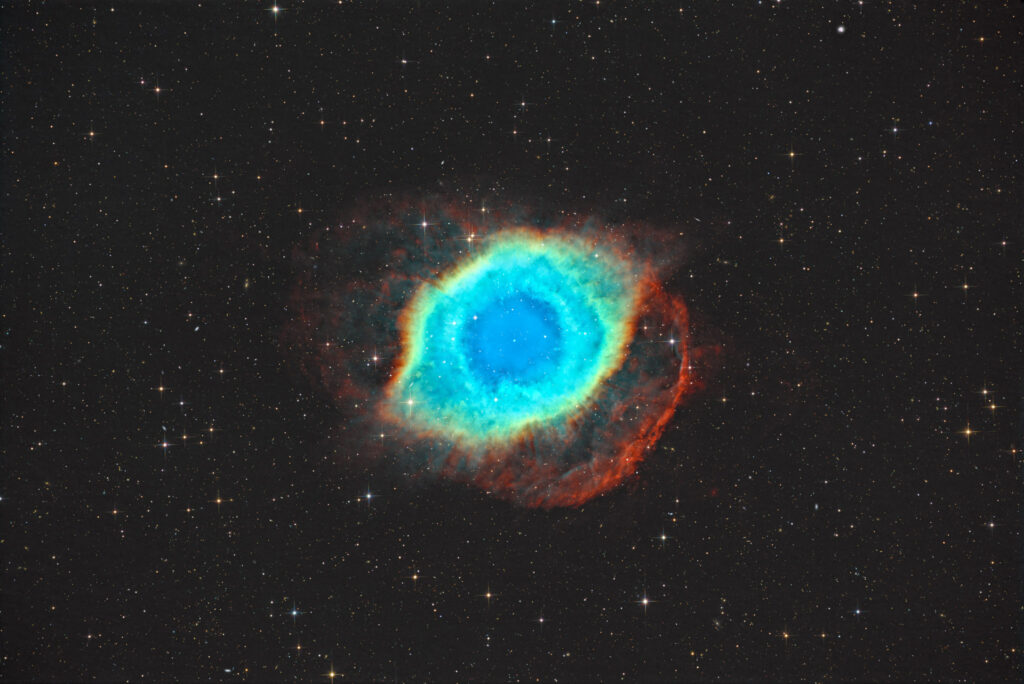
Some old narrowband data of the Helix was sitting for quite a while on my hard disk. Recently I started to adopt the “Foraxx” palette described in The Coldest Nights blog and used this technique with the SHO data, but combined both the SHO Foraxx and Bicolor Foraxx results, with a bit of RGB mixed in, and added RGB stars. Hope that the result isn’t too bad. ;-)
See an older post for a “classic” rendering of NGC 7293.
More details at Astrobin (70 % crop).
Continue reading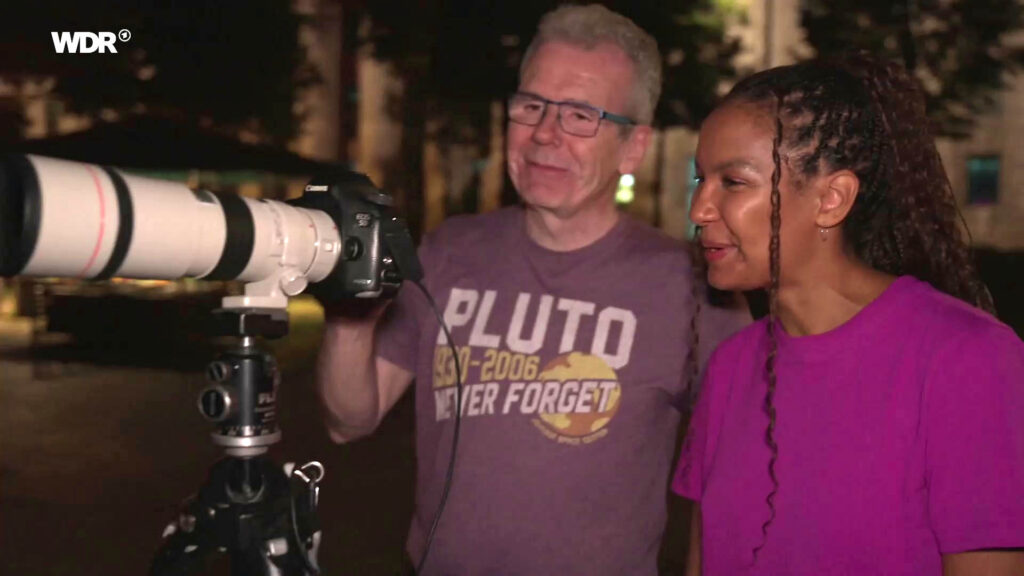
Am 9. Oktober war es dann soweit und die Quarks-Sendung “Zurück zum Mond: Der neue Wettlauf ins All” mit unserem Beitrag “Die Mondtäuschung” im WDR-Fernsehen zu sehen. Hier im Standbild mit Joana Abondo. Der Dreh mit Joana, Jakob Kneser und dem Filmteam im August hat großen Spaß gemacht.
Took a while to get this short time-lapse of the total lunar eclipse on 07 Sep 2025 online. Photographed at Frankenwerft, Cologne, Germany near central station.
Hat ein Weilchen gedauert, dieses kurze Zeitraffer-Video der totalen Mondfinsternis vom 7. September 2025 online zu stellen. Fotografiert auf der Rheinuferpromenade, Frankenwerft, Köln in der Nähe des Hauptbahnhofs.
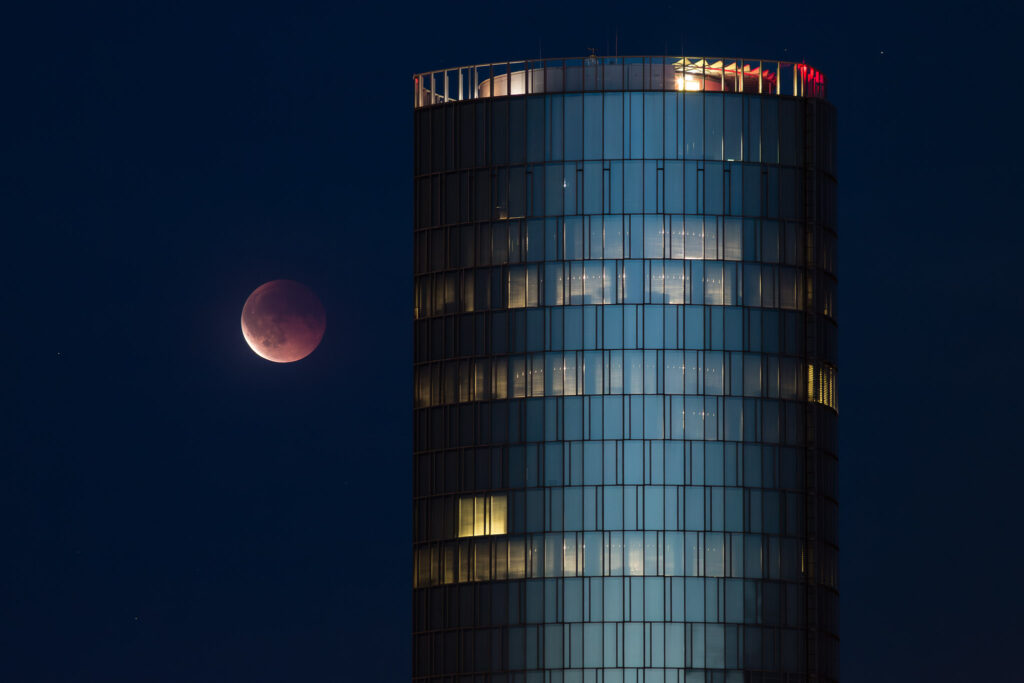
After a looong time, a total lunar eclipse was visible from Cologne, Germany. The last time I photographed a lunar eclipse was back in 2019!
Nach laaanger Zeit war endlich wieder eine totale Mondfinsternis in Köln sichtbar. Das letzte Mal habe ich eine Mondfinstern 2019 fotografiert.
Local circumstances (local time = CEST):
20:01 Moonrise
20:11 Max eclipse
20:35 First sighting in Cologne, above a layer of light cirrus clouds
20:52 End of total eclipse
21:56 End of partial eclipse
22:55 End of penumbral eclipse